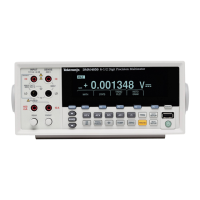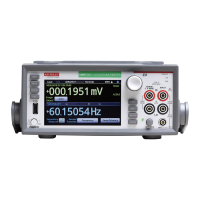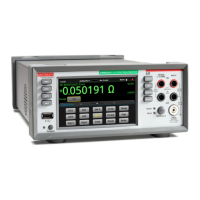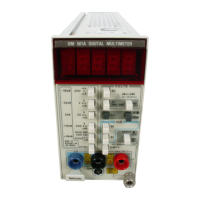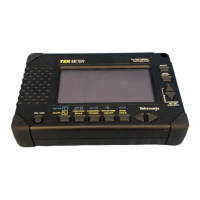DMM4040/4050
Users Manual
4-8
Function modifiers:
APERTURE Displays three different gate time selections: 0.01, 0.1 and 1 second.
These selections set the minimum amount of time the Meter takes to
measure frequency. Shorter gate times result in lower measurement
resolution.
2ND MEAS Cycles the secondary display through the measurement functions
listed below, and then off. When a second measurement function is
selected, the 2ND MEAS soft key label is highlighted.
Period – If a frequency measurement is in the primary display, the
period of the signal appears in the secondary display when the
2ND MEAS soft key is pressed.
Measuring Resistance
The Meter is capable of making two-wire and four-wire resistance measurements. Two-
wire measurements are easy to set up, and will make accurate measurements in most
applications. In a two-wire resistance measurement, both the source current and sensing
is done through the INPUT HI and LO terminals. A four-wire resistance measurement
will source current through the INPUT HI and LO terminals and use the SENSE HI and
LO to measure the resistance.
Making a Two-wire Resistance Measurement
To make a two-wire resistance measurement:
1. Connect the test leads to the Meter’s input connectors as shown in Figure 4-1.
2. Press N.
0.206220
MΩ
F1 F2 F3 F4 F5
caw030.eps
3. If not already highlighted as shown above, press the 2W 2WX4W soft key.
Function modifiers:
D FLTR A filter for quieting noisy measurments. This filter averages readings
to reduce reading noise when in immedicate trigger mode or when in
trigger mode with an unending number of triggers selected. The filter
is only available for dc functions at rates slower than 1 PLC. The
number of readings averaged by the digital filter varies with dc
function and range.
A FLTR A 3-pole analog filter for improving noise immunity. The filter is
active when this soft key label is highlighted and will increase
stabilization time of the measurement. See Appendix D for more
information on when to use the analog filter.
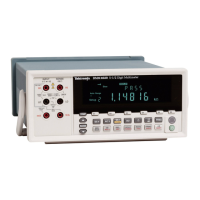
